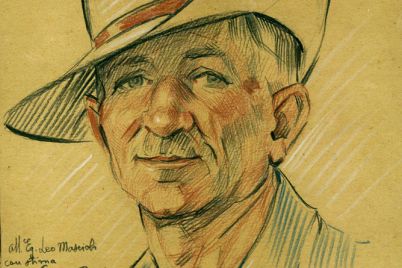 Waiting for Chrysanthemums combines a “procedural” with a family story. What inspired you to approach the story this way?
Waiting for Chrysanthemums combines a “procedural” with a family story. What inspired you to approach the story this way?
Before I say anything, I must tell you that nothing I have written hasn’t already happened. That goes for Waiting for Chrysanthemums and my other writings. I think I write about power struggles, about good and evil, right and wrong. This novel presents the two sides of life. I learned something important from a week-long retreat at the Humber School for Writers where Nino Ricci was my group’s mentor. He said, and I am paraphrasing, that we writers need to show a good side of an awful, evil person. In other words, we have to consider that even the most evil human being has a reason for his/her capacity for evil. Personal experiences have given me the desire to express my ideas in my writing. Why is a family story intertwined with a police procedural? Probably because I feel so strongly about my family. I am a writer and was a teacher/instructor, but my family has always been in the forefront of anything I have ever done. And there are reasons for that! It took me almost eight years to have a child – a son. Such hard work! I have been with the same man for 48 years and have lived in the same house for 46 years. That’s why family is always in my work. The police procedural, unfortunately, comes from personal experience too.
Did you have to do much research – for example, about the construction industry or police investigations?
I did a lot of research. And not just about the construction industry or police investigations. This book began many years ago. When I first started writing it, I made reference to the Renaissance Exhibit at the Detroit Institute of Arts. That was just after the 9/11 tragedy in 2001. But I had to make changes because I set the book in the 1980s. I had also made reference to the Detroit rapper Eminem and a film called 8 Mile. The film came out in 2002 and Eminem was born in 1972. So I had to scrap that too! Because the book is set in the 1980s, I had to make sure I could only refer to the Renaissance Exhibit, but not say that my main character went there – just that she was looking forward to going there. I also had to deal with the gigantic incinerator in Detroit and a river in Cleveland that caught fire. Things had to be changed and updated.
My “go to” person for all things construction was my husband. He worked in the industry in Italy and brought his skills with him to Canada. So, if I wanted a heavy chain link to be tampered with, causing stacks of gigantic cement blocks to topple, nearly killing a person, he could explain how that could happen.
As for police investigations, I learned a lot from my grandmother’s tragic fate. Detectives kept me informed of all things pertaining to the investigation. They regularly called and came to my house to talk to me about what they had discovered and so on. The man known as the Essex County Serial Rapist was eventually apprehended after DNA evidence proved his guilt. This person had assaulted several older women in our area.
I have read a lot of mysteries: Donna Leon and her competent Commissario Guido Brunetti figures everything out whether he’s in Venice or other areas of Italy. Her books take me back to Italy and the Veneto/Friuli region. I also read Andrea Camilleri who writes the Salvo Montalbano series. Camilleri is brilliant! Most of his many mysteries have been televised and I watch them on RAI-TV. I also read Agatha Christie and Margaret Haffner, and long ago I used to review crime/mystery books for the Mystery Review. I’ve learned a lot by reading these books. I also read about Napoleon and his idol Julius Caesar. Although it’s not fiction or mystery, it sure is fascinating, and that too has had an influence on me. As I said, all that is happening seems to have already happened!
Is there anything from the book that’s “ripped from the headlines”? Were you inspired in any way by actual events in Windsor?
It is hard not to do that. In fact, I’ve recently stopped reading the newspaper because the headlines always strike me as having the possibility of another story! Our connection to Detroit is critical. I think it must be one of the headline capitals of the world! That’s the other reason I no longer watch their TV. I stick to Canadian and Italian TV. Murders are quite common in Detroit. The second murder that occurs in the book is something that actually took place years ago in more or less the way I describe it. The first “casualty” came to me from something I heard somewhere, I can’t recall where, but a stiletto was involved.
The three generations of women characters – Regina, Caroline and Lily – are wonderfully rich and interesting. All three are so independent and feisty. How did you find inspiration for them? Are they based on real women?
Well, with the not-so-new ME-TOO movement, I always saw my mother and grandmother as very strong people. My grandmother went through both World War I and World War II. She certainly had her share of misery! My mother was an extraordinary person. She and my father and I came to Canada in 1948. She did whatever she could to provide for the family. She cleaned house for those who didn’t, ironed clothing for those who couldn’t, and eventually became what we might today call an administrator for a number of canning factories in Essex County. I wrote a story about her work. It’s in one of my English Second Language books from the 1970s. There’s another story about her in my short story collection: Family Matters. She too experienced World War II. Many stories to tell about that! As for my character, Lily, I’m glad you see her as independent and feisty. Lily is probably the woman I wish to be but am not. My character in the book is fearless and crafty. I am not!
I love the sense of place in the novel. I almost saw the Detroit-Windsor setting as another character! Can you talk about how your hometown influenced the way the story unfolds?
Windsor and Detroit are attached at the hip, as they say. Well, that’s what Windsorites say. I’m not too sure Detroit thinks twice about those of us on the other side of the Detroit River! But we do have a symbiotic relationship. Like that little bird that sits on the huge elephant picking on small pests bothering the elephant. We are a small city in comparison to Detroit. Although Detroit itself has declined in population recently, it is getting back into shape. Regardless, Detroit and the surrounding area is a much larger demographic and it is a very different city from ours. Years ago, I wrote about Detroit and how it was once considered the Paris of the Midwest. Back in the 50s and 60s, Windsorites went there all the time: to eat, shop, go to events, etc. Even today, many Windsorites work in the Detroit area. There are countless nurses and doctors who work in their large hospitals and, of course, so many Windsor engineers work in the auto industry in the Detroit area. The auto industry connects Windsor-Detroit.
Can you share anything about the process of writing, about the relationship between Lily and her hunky husband Michael? There’s so much chemistry between them!
What a nice question! The fact that you ask about Michael, the “hunky husband” makes me smile. Early on some readers might think Michael is the culprit. As I said earlier, I have been with the same man for 48 years. A lot happens in 48 years! I wanted a physically and mentally strong man in the book. I guess I made Michael the ideal male. Does such a man exist? Perhaps? Michael is shown to be sensitive, thoughtful, and has all those attributes one would want a man (or a woman) to have. And Lily is no less, I think. So, I suppose I’ve created two nearly perfect beings? I think I created them this way because I wish people could be this way. But that isn’t possible, right?
My own man of 48 years is clever, intelligent, sensitive and was once quite handsome and strong! But he is not perfect! He can be quite stubborn and adamant. And he CAN talk but chooses not to most of the time! Very silent – unless the topic of soccer or auto racing comes up. I guess I made Michael much more sensitive and he actually talks to Lily! Although he does all he can to not have her worry. He’s careful with his words and actions. But I did want Lily and Michael to be madly in love with each other!! Corny, I suppose. But even Salvo Montalbano has a lady friend. They aren’t married and theirs is a long distance affair: she, Livia, lives in Genova and he in Sicily, but they fly back and forth to be together. Actually, it is Livia, the woman, who does most of the flying back and forth. Salvo Montalbano is usually too busy on a case to allow himself to fly to Genova. They too have a rapturous relationship. Maybe I wanted Lily and Michael to have the same sort of “chemistry” as you call it.
Did you outline the story arc before you started writing or did it reveal itself as you went along?
I think I knew what came first and what came last and I knew the sequence of events in between. I wrote chapters according to how I saw things develop. I worked on the characters a lot. I wanted to make them distinct, to allow the reader to get to know them individually. Sometimes I would write a chapter out of sequence and then fit it into the book, because I had an idea and didn’t want to lose it. Writing a novel is perilous work! As you know. Ideas strike you in mid-sentence and you never want to lose the idea, so you write it up asap, and then see if it can fit in somewhere in the book.
Did the book always have this title?
No, my original title was “Waiting for Chrysanthemums and Roman Candles.” Those are the names of two types of fireworks. They all have names. As I was editing, it simply struck me that the title was too long and sounded too connected to things Italian. It was in an instant that I deleted the Roman Candles. My wonderful and patient editor, Domenic Cusmano, agreed.
Will there be a sequel? It feels as if there should be.
That’s interesting. I do have a novel that could be called a sequel. But it depresses me every time I look at it. It is about my grandmother and her difficult life. I like to use humour a lot and I can’t find any evidence of humour in this “sequel.” There’s nothing to laugh about. I think most of our ancestors had difficult lives. I don’t want to write a book about the standard difficulties: disease, heartbreaks, famine, etc… My grandmother was never ill, ever! When she was assaulted, she had had her knee scoped. That was the first medical intervention she ever had. She was in her mid 80s. I can’t see her the way we see the typical grandmother who sacrifices everything for her descendants. She certainly wasn’t like that. She was very independent despite her adversity.



